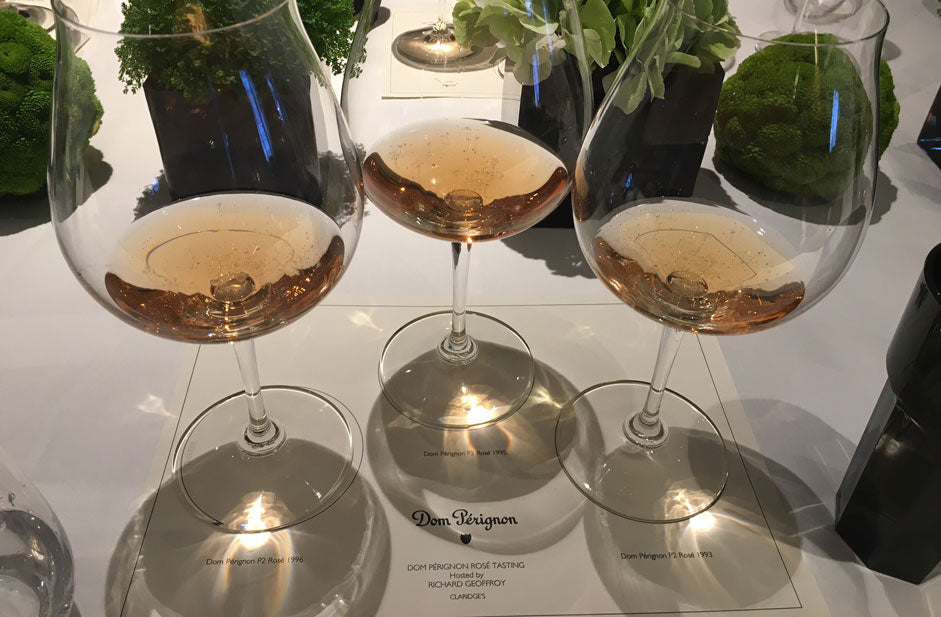

Rebranding anything is difficult. People are conservative by nature and even when something has a terrible name to start with, like “Oil of Ulay”’s change to simply “Olay” or “Opal Fruits” to “Starburst”, there’s the feeling that something’s been lost. Dom Pérignon’s chief Chef de Cave Richard Geoffroy certainly had that fear when he took the audacious step in renaming Dom Pérignon’s late cellar release, the Oenothèque, to the more ornate, Plénitude. However, at a recent tasting of the Dom Pérignon Plenitude (P2) Rosé 1996 he was happy with his decision.

For those who don’t know the story, Dom Pérignon has traditionally made exemplary vintage champagne, released nearly 10 years after being made at a point where the Champagne house feels their wine is both at its earliest to enjoy but can also benefit from time in the cellar. Additionally, they don’t release all of their vintage production, a proportion is held back, kept on their lees in the bottle, and not disgorged. This is then released at a later point when the wine has evolved into something different still. The most recent example of this was the Dom Pérignon 1996 Oenothèque – the suffix denoting a library or later cellar release.
The problem for Richard Geoffroy was that one suffix wasn’t enough, as to his mind Dom Perignon has several evolutionary stages, more than just the initial and then later release. As he puts it, “each vintage of Dom Pérignon is disgorged and (re)released only when I consider it has reached a new Plénitude, a privileged period of time when Dom Pérignon attains its radiance.” Here Richard is conveying three things, firstly that there is a generosity and fullness to the wine at each stage in its life, second that it has reached a new point in its evolution, and thirdly that there can be several Plénitudes of the same wine over the course of time.

Last Thursday’s tasting was something of a journey, as we went from a pop-up installation on South Moulton street to the Dom Pérignon suite at Claridges. We tasted our way from the most recent 2006 Vintage release to the latest Plenitude, the P2 Dom Perignon Rosé 1996, through to the opulent P2 Rosé 1995, and the elegant and beautifully fine P2 Rosé 1993. The 1996 having been recently disgorged is still very young (at 20 years old) and almost closed. It’s a true paradox of flavours, tightly knit citrus vibrancy surrounded by mature and almost oxidative notes associated with yeast autolysis and long lees aging.

Whilst we had the great pleasure to try these wines, the real privilege of the tasting was having Richard himself take us through them, as well as the story and his reasons and thoughts on the evolution of Dom Pérignon. In his owns words, “Each wine—each Plénitude—will reveal a different facet of Dom Pérignon: P2 and P3, thanks to the extra time spent maturating on their lees under our careful attention, will grant you an experience ever closer to the Spirit of Dom Pérignon.”

